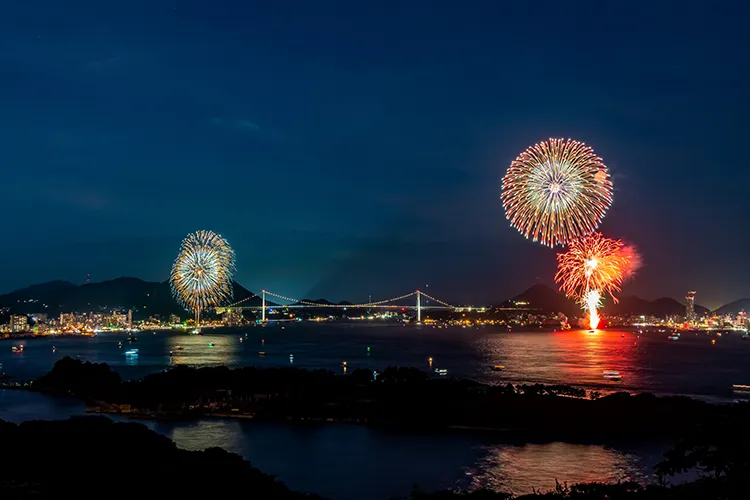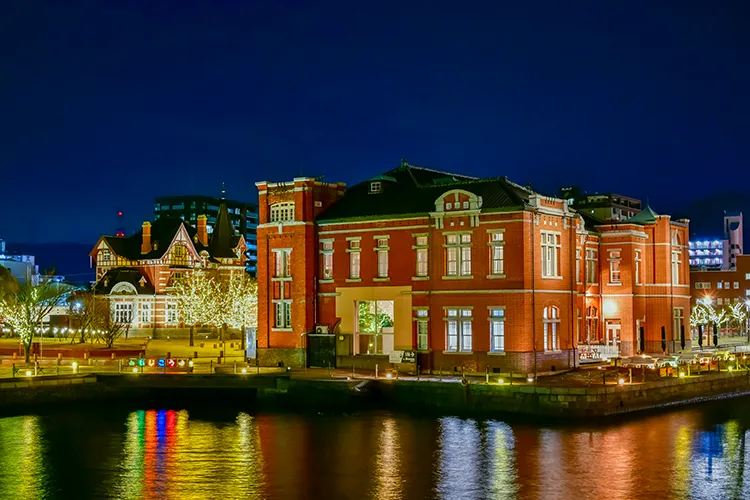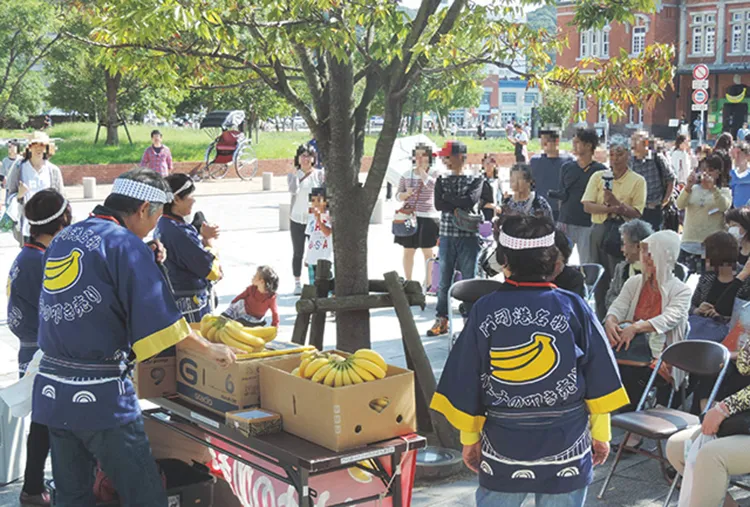Festival
Mekari Ritual (Mekari Shrine)
May
Mojiminato Festival
August
Kanmon Straits Fireworks Festival

The annual fireworks festival takes place on August 13 and is now one of the most highly regarded events of its kind in Japan. Inaugurated in 1985, this event is a tribute to the spirits residing in the area and those who commemorate the Obon festival in their hometowns. It is the sole fireworks show in Japan that takes place over straits and across prefectural boundaries.
October
Mojiko Retro Illumination

December
Mojiko Retro Countdown
Traditional Culture
A Fruitful Practice: Banana no Tataki-Uri

Bananas arrived in Japan in 1903. The first shipments arrived in Moji from Taiwan, which had
come under Japanese control
eight years prior. Moji’s proximity to Taiwan made it a natural gateway for large-scale
imports, which began in 1908 and
continued unbroken until the final years of World War II (1939–1945).
Several dozen wholesalers and warehouse owners capitalized on the surfeit of bananas and
began selling the fruit in
Moji. Prior to refrigerated shipping, bananas were transported while still green and unripe.
The dealers stored their
product in cellars, allowing the fruit to ripen naturally, and sold them once they had
turned an appealing yellow.
Unavoidably, some bananas were damaged or ripened too quickly in transit and were overripe
by the time they arrived. As
these could not be sold, they were often made into processed foods. However, the best way to
move the blemished or
overripe bananas quickly was to sell them on the street at a cut rate. Banana vendors
developed a unique sales patter,
half auctioneering and half singing, which they delivered while beating the table to keep
time and attract customers.
The origins of the language, rhythms, and phrases remain obscure, though some are thought to
have been inspired by old
army songs. The fame of such performances quickly spread across Japan, and this “banana
bargain-busking” (banana no
tataki-uri) became associated with Moji.
Banana Boom and Bust
By the early Shōwa era (1926–1989), Moji was caught up in a craze of streetside trading.
During this heyday, scores of
salesmen vied to be the wittiest, the loudest, and the most successful. From the waterfront
to Sanbashi-dōri, vendors
shouted and haggled in nonstop performances. Sales routines became ever more creative as
banana traders competed to
develop the catchiest, most effective sales patter. Sadly, as the country became embroiled
in World War II, the banana
trade disappeared, and Moji’s yellow gold rush came to an end.
A memorial to the glory days of the banana trade stands near Mojikō Station, but banana no
tataki-uri is still performed
today as a tourist attraction. Starting at 1:00 p.m. on Saturdays and Sundays, one or more
salesmen gather in the Mojikō
Retro historic district to hawk bananas until they sell out. The performances are highly
interactive, and spectators are
encouraged to banter and negotiate with the salesmen to determine a satisfactory price.
